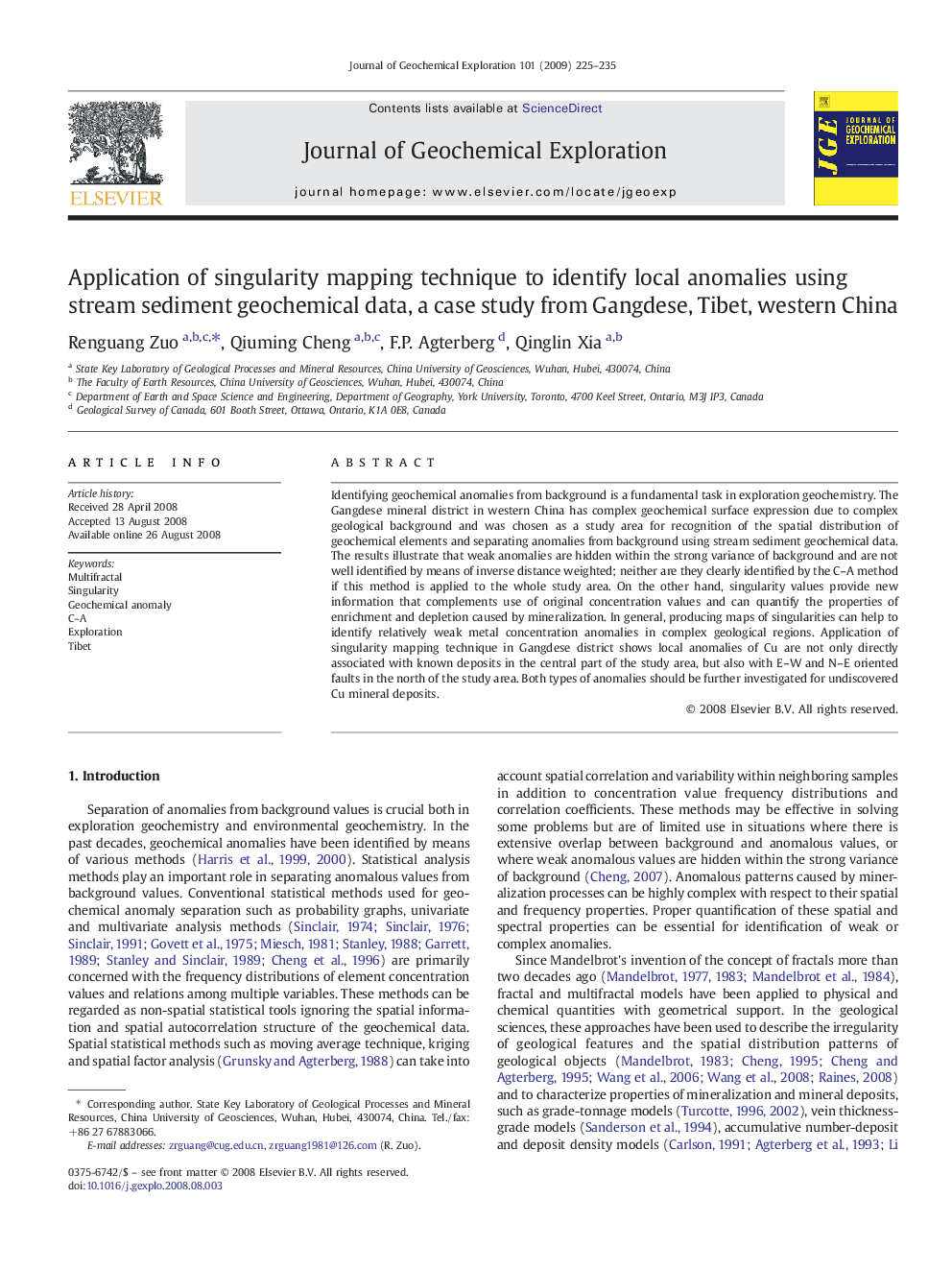| Article ID | Journal | Published Year | Pages | File Type |
|---|---|---|---|---|
| 4458059 | Journal of Geochemical Exploration | 2009 | 11 Pages |
Identifying geochemical anomalies from background is a fundamental task in exploration geochemistry. The Gangdese mineral district in western China has complex geochemical surface expression due to complex geological background and was chosen as a study area for recognition of the spatial distribution of geochemical elements and separating anomalies from background using stream sediment geochemical data. The results illustrate that weak anomalies are hidden within the strong variance of background and are not well identified by means of inverse distance weighted; neither are they clearly identified by the C–A method if this method is applied to the whole study area. On the other hand, singularity values provide new information that complements use of original concentration values and can quantify the properties of enrichment and depletion caused by mineralization. In general, producing maps of singularities can help to identify relatively weak metal concentration anomalies in complex geological regions. Application of singularity mapping technique in Gangdese district shows local anomalies of Cu are not only directly associated with known deposits in the central part of the study area, but also with E–W and N–E oriented faults in the north of the study area. Both types of anomalies should be further investigated for undiscovered Cu mineral deposits.
